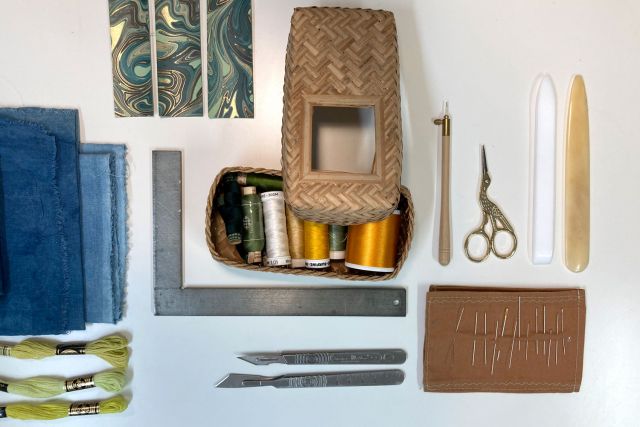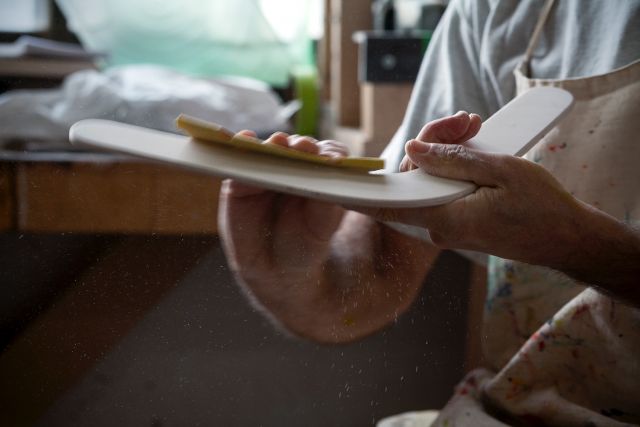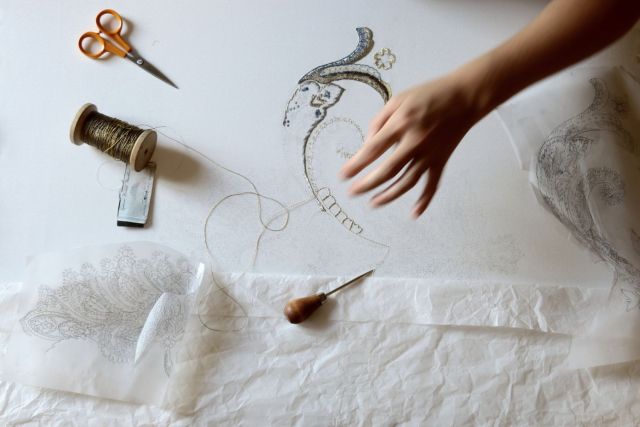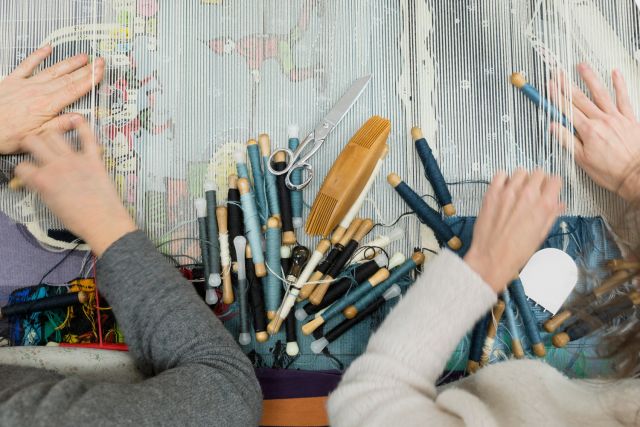This binding of 'Accueil' (or 'Reception') is made of two spines and two covers. Its structure is movable, as the first spine slides into the other. The decoration is based on René Crevel's texts, which express a fascination for women. The colours and materials are inspired by this observation, and on the work of Dorothéa Tanning.
Length 18 cm
Width 21.2 cm
Height 2.8 cm
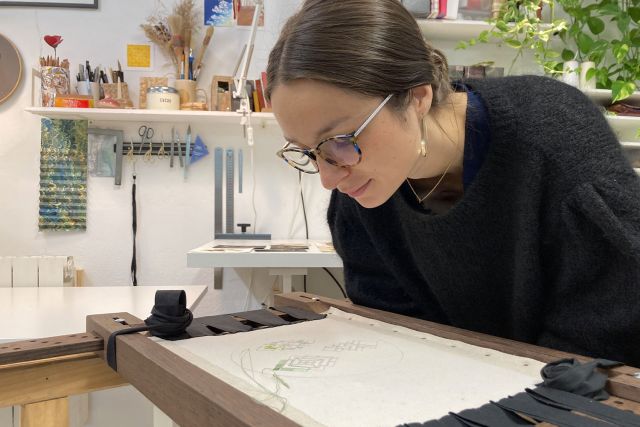
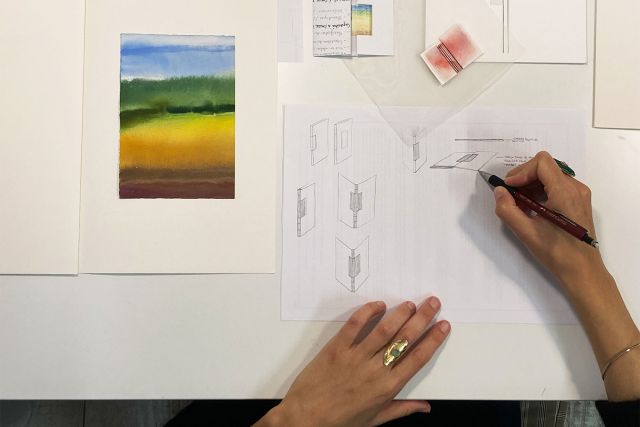
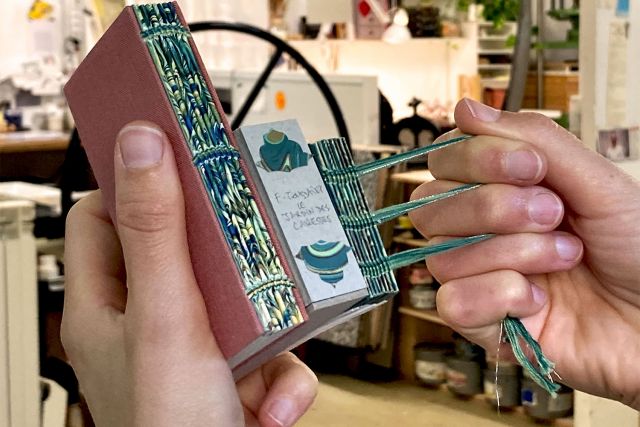
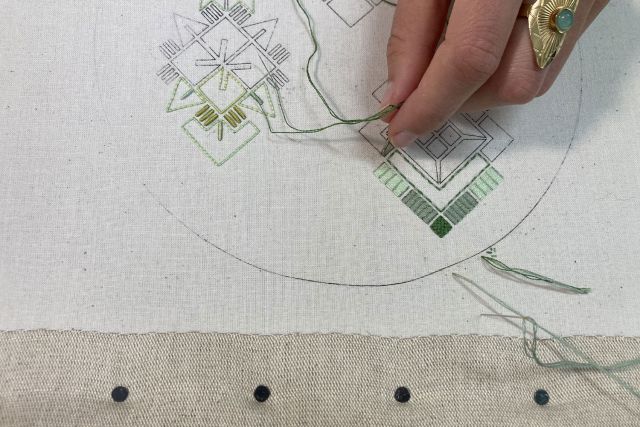
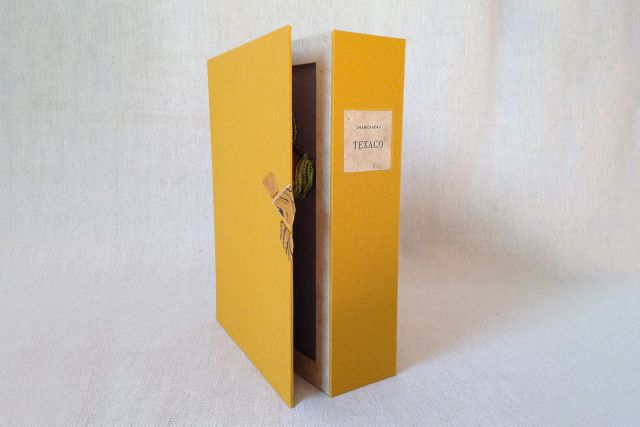
Anaïde Fleig
- Bookbinder
- Montreuil, France
- Master Artisan
By appointment only
+33 603606110
Storytelling through bookbinding
- • Anaïde specialises in embroidered binding
- • It can take her up to a year to design a binding
- • She graduated with a Métier d’Art diploma in embroidery and bookbinding
Anaïde Fleig subtly combines the craft of embroidery with that of bookbinding. It is her affinity for the textures and techniques of each discipline that fascinates her and leads her to explore the potential of their union to create the book object. For Anaïde, binding is a “pretext for a technical constraint”, which guides her to an overall study of the book: “This is where the fragile balance of the bookbinder's intervention lies: knowing how to think of a design and create a structure that will dress and protect the book while remaining in a light and subtle evocation of its inner content, thus inviting the reader to immerse himself in a reading of the work.” She calls her creations “brodure”, mixing the French words 'broderie' and 'reliure'.
Read the full interviewWorks
Photo: © Anaïde Fleig

Photo: © Anaïde Fleig
This book called 'Le papier, le livre' (or 'The paper, the book') was written by Maurice Chappaz. The structure of the binding allows all the sections to open completely flat. The decoration has been worked in a coloured gradation of paper, reusing the Fabriano Roma cover paper. The composition is sewn using the blanket stitch. The decoration continues in the heart of the book.
Length 28 cm
Width 27 cm
Height 1 cm

Photo: © Anaïde Fleig
This title 'A la belle étoile' (or 'Under the stars') was written by Joseph Delteil and Eaux-fortes d’Antral. The decoration of this book has been worked with the natural dyeing of silk, using the sorghum plant. The principle of the Tie & Dye technique has been revisited to explore the colour palette of sorghum through different soakings. The boards are dyed and embroidered with "surfine" silk.
Length 21 cm
Width 24 cm
Height 2 cm

Photo: © Anaïde Fleig
This binding of 'Texaco' by Patrick Chamoiseau, is flexible. The boards and spines are made from split leather, fabric and paper. The choice of structure and the thickness of the book block has inspired the creation of a case with a slight offset. The embroidery represents the resurgence and power of the vegetal universe expressed in the story.
Length 16.5 cm
Width 22 cm
Height 5 cm

Photo: © Anaïde Fleig
The opening and closing system of this book is based on four embroidered parchment strips. The decoration is made of embossed pieces of burnt parchment. The title has been worked with hot foil gilding, letter by letter, on small pieces of parchment.
Length 13 cm
Width 20 cm
Height 2 cm





